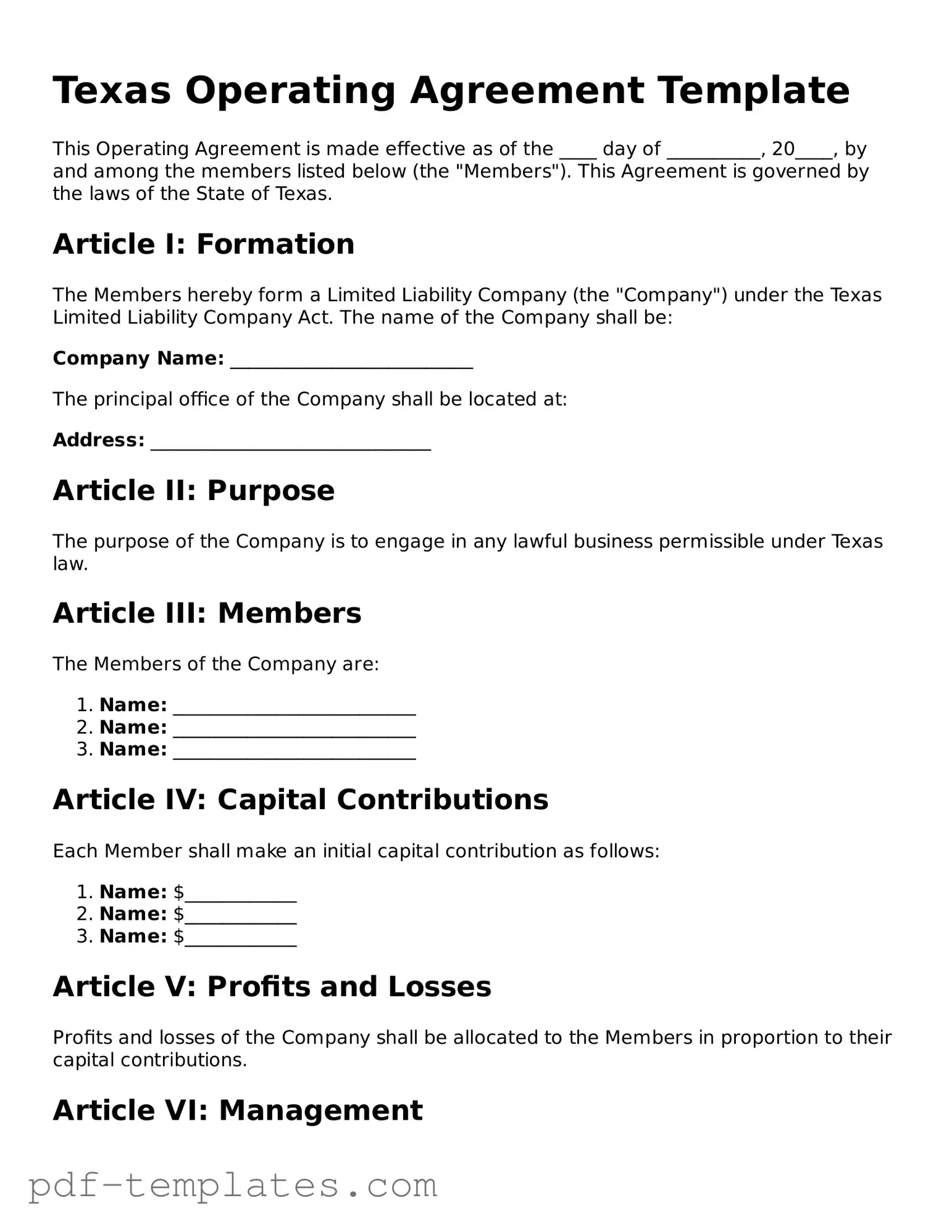The Texas Operating Agreement is similar to the Limited Liability Company (LLC) Operating Agreement used in other states. Like the Texas version, this document outlines the management structure, member responsibilities, and operational procedures of the LLC. It serves as an internal document that governs the relationship between members and helps protect their limited liability status. Each state has specific requirements, but the core purpose remains the same: to clarify the roles and responsibilities of members within the company.
Another document that shares similarities is the Partnership Agreement. This agreement outlines the terms of a partnership, including the roles of each partner, profit-sharing arrangements, and decision-making processes. Like the Texas Operating Agreement, it is a foundational document that helps prevent disputes by clearly defining expectations and responsibilities among partners. Both documents aim to establish a clear framework for operation and governance.
The Corporate Bylaws are also comparable. These bylaws govern the internal affairs of a corporation, detailing how the corporation will be managed, how meetings will be conducted, and the rights of shareholders. Similar to an operating agreement, corporate bylaws serve to protect the interests of stakeholders and ensure compliance with state laws. Both documents are essential for maintaining order and clarity within the respective business structures.
A Joint Venture Agreement can be likened to the Texas Operating Agreement as well. This agreement details the terms of a partnership between two or more parties for a specific project or business activity. It outlines contributions, profit-sharing, and responsibilities, much like an operating agreement does for LLC members. Both documents emphasize cooperation and clear communication to achieve common goals.
The Shareholders' Agreement is another document that parallels the Texas Operating Agreement. This agreement is used by corporations to define the rights and obligations of shareholders. It can cover aspects such as voting rights, transfer of shares, and management decisions. Similar to an operating agreement, it aims to protect the interests of the parties involved and provide a structured approach to governance.
The Franchise Agreement shares some characteristics with the Texas Operating Agreement. This document outlines the terms between a franchisor and franchisee, detailing the rights and responsibilities of each party. Both agreements serve to clarify expectations and operational procedures, ensuring that all parties understand their roles within the business framework.
The Nonprofit Bylaws are also comparable to the Texas Operating Agreement. These bylaws govern the operations of a nonprofit organization, detailing the roles of directors, membership requirements, and meeting procedures. Like an operating agreement, nonprofit bylaws provide a framework for governance and help prevent conflicts by clearly defining roles and responsibilities.
The Employment Agreement can be seen as similar in its purpose of defining roles and expectations, although it focuses on the employer-employee relationship. This document outlines job responsibilities, compensation, and termination conditions. While it differs in scope, both agreements aim to establish clear guidelines to foster understanding and minimize disputes.
Lastly, the Service Agreement, which outlines the terms between a service provider and a client, shares some similarities with the Texas Operating Agreement. This document details the services provided, payment terms, and responsibilities of both parties. Both agreements focus on clarity and mutual understanding to ensure successful collaboration and minimize misunderstandings.
